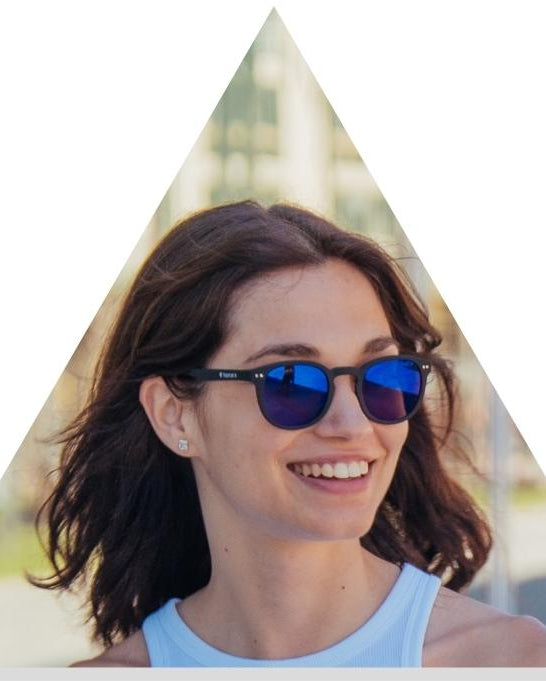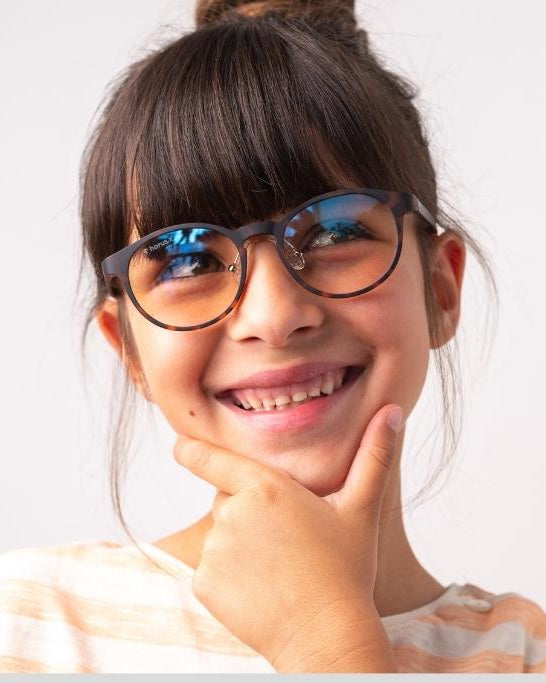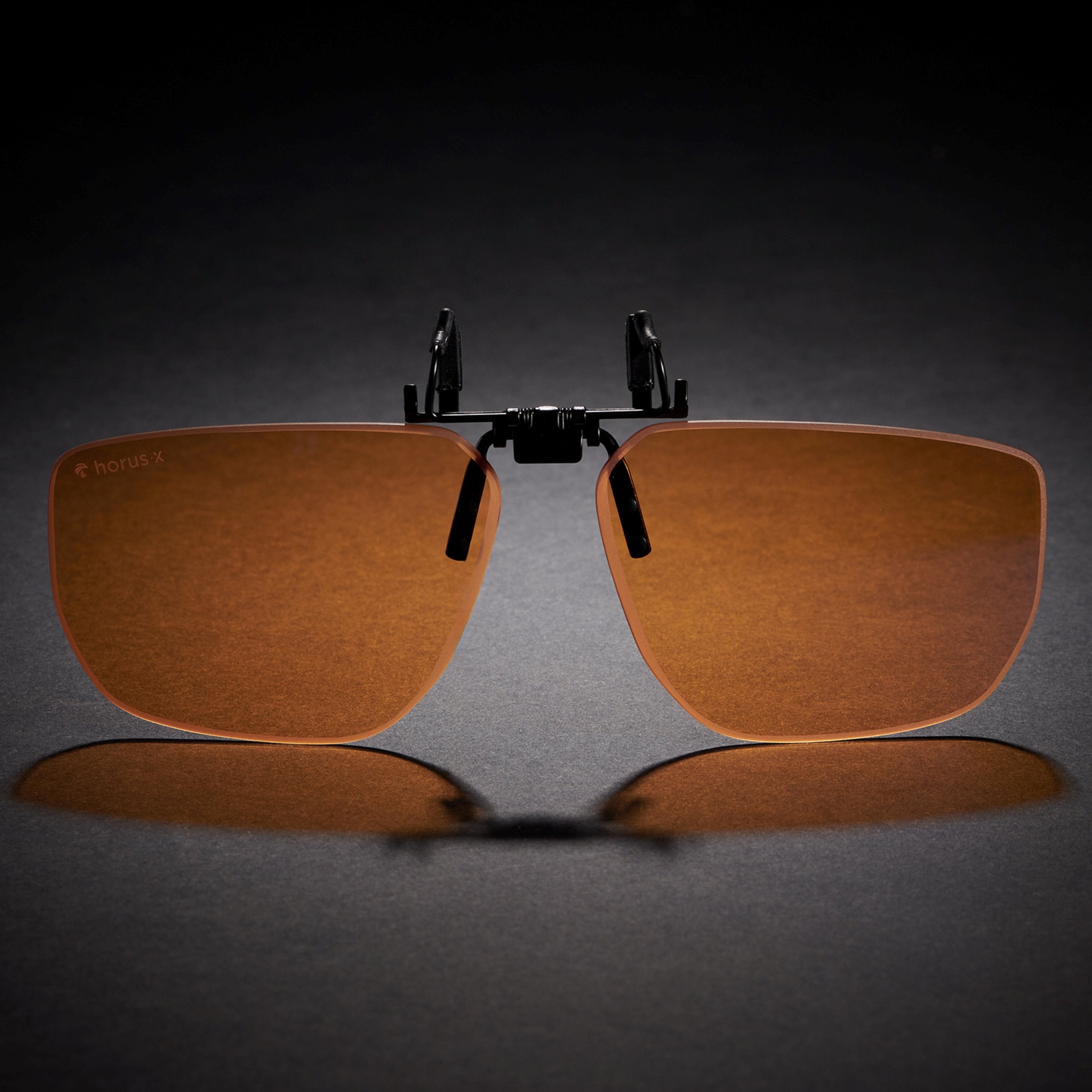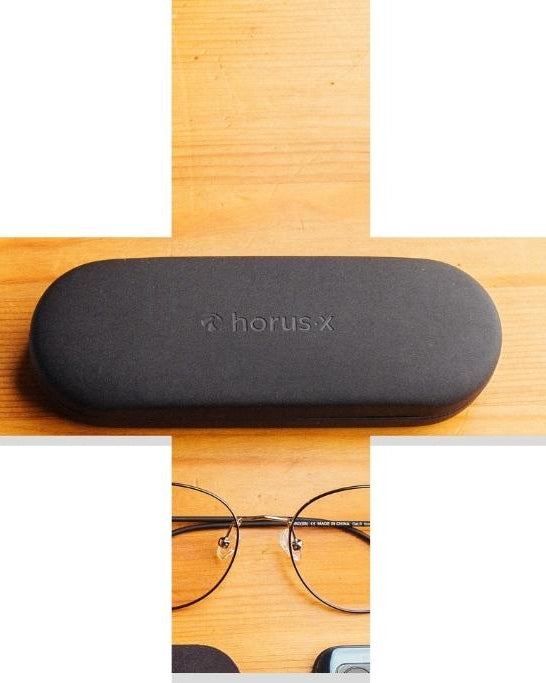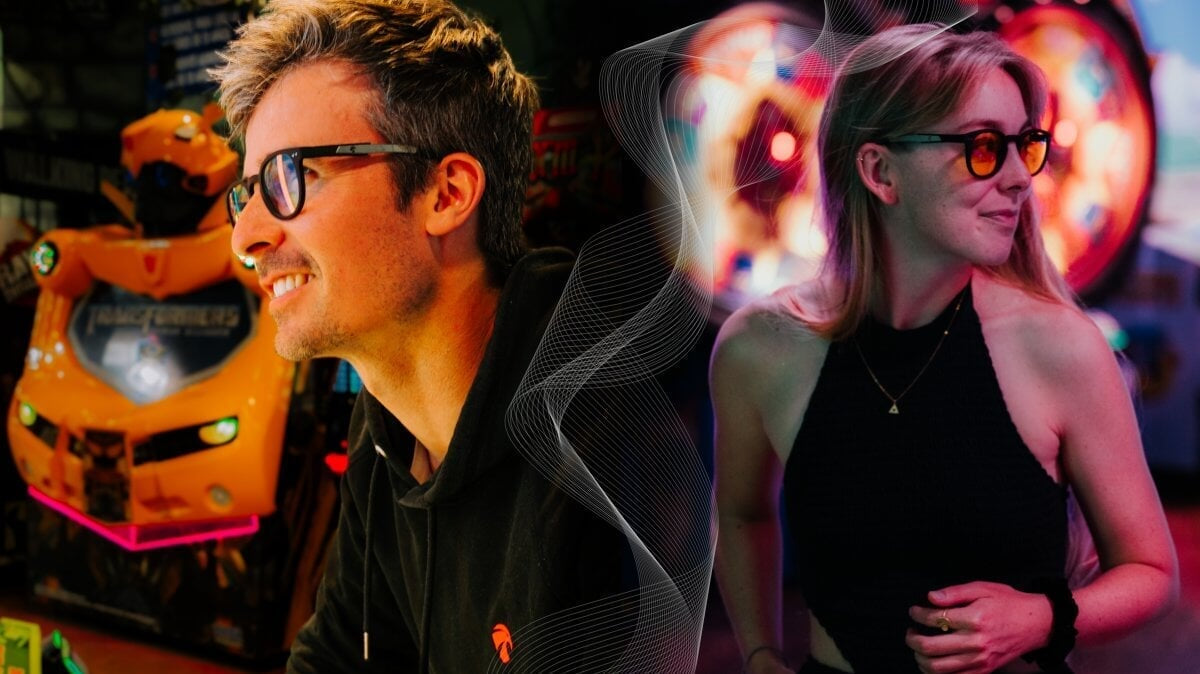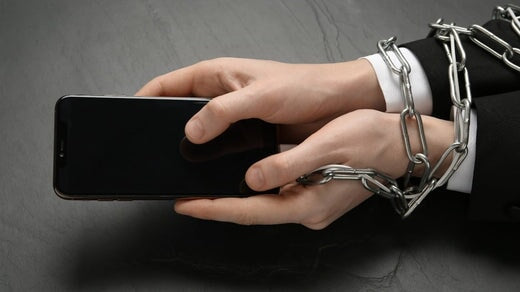An increasing number of studies have highlighted the toxicity of blue light to our eye health and sleeping patterns. But all that information on best practices can be overwhelming, so we’ve put together a simple guide to LEDs and blue lights to help ease your mind.
The American Academy of Ophthalmology confirms the link between exposure to blue light emitted by objects using LEDs and disrupted sleep, stating:
“Blue light does affect the body’s circadian rhythm, our natural wake and sleep cycle. During the day, blue light wakes us up and stimulates us. But too much blue light exposure late at night from your phone, tablet or computer can make it harder to get to sleep.”
They therefore recommend turning off devices at least 3 hours before bedtime to minimize blue light exposure from TVs and LED lights.
What are LEDs?
Both screens and bulbs use LED lighting. For the scientists among us, the Environment, Health & Safety division of Berkeley Lab defines LEDs as follows:
“A light-emitting diode (LED) is a semiconductor assembly that emits light when an electrical current is passed through it. LEDs emit high-intensity optical radiation across the ultraviolet, visible, and infrared (IR) spectrums.”
Or, in other words, “Electricity make light work good.” 💡
The biggest advantage of LED lights is that their performance is constantly improving thanks to clever manufacturers. We can obtain more and more powerful lighting using increasingly low power consumption. That also means it’s considerably less expensive, something we could all use right now (cost of living crisis, amirite?).
As a result, LED technology is used everywhere:
- 💡 To light up your home (most of your lamps and bulbs), especially in Europe, where traditional bulbs are actually banned.
- 💡 In public lighting in your street
- 💡 In your favorite stores
- ⌨️ In the backlight of your gaming keyboard
- 🎄 In the little decorations on your living room wall
- 🚗 In the lights in your car
- 🧸 In your children's toys (we'll come back to this later)
- 📱 In absolutely all your screens (tablet, TV, computer, iPhone, etc.)
So, what’s the issue with this?
Well, we’re enduring near constant exposure to LED lights throughout our day to day lives and spending more time than ever in front of screens, whether that’s a computer, TV, tablet or your cellphone. For example:
- 🎮 Gaming has become a way of life, and even a competitive sport (and way more enjoyable than watching the US lose at soccer).
- 💻 Remote working has become very important, especially since the covid.
What are the dangers of blue light from LEDs?
The problem is that all this artificial LED light is very very intense. And when we say intense, we don’t mean the smoldering intensity of Thor’s gaze, but more the sneaky intensity of Loki’s 🐍.

It’s this intensity coupled with how often and consistently we are exposed to LED light that poses the problem. The average American for example, spends more than 6 hours a day in front of a screen; and most of you are probably reading this thinking that doesn’t even sound too bad!
Modernization of screens has intensified visual problems thanks to the increasingly vibrant colors powered by LED technology. Our retinas and brains have a hard time coping with the changes.
Basically, technology is evolving faster than we are, and our poor stuck-in-the-past eyes can’t cope.
💻 Ultra-modern screen technology used regularly in large doses + 👀 the human eye that hasn't evolved much over the last millennia = 😧 Significant consequences.
Then on top of that, blue light is emitted from these devices through LEDs. Blue light emits the shortest and most intense wavelengths of visible light, closest to UV on the spectrum, meaning it’s also the most harmful.
So, with LEDs you’re getting two negative types of exposure for the price of one!
To quote… well… ourselves:
“The visible light spectrum runs between 380 to 780 nanometers. The harmful blue light wavelength sits in this spectrum between 380 and 500 nanometers, just below green light and above UV light.”
Are the dangers of blue light scientifically recognized?
The real answer here is… sort of. Certain aspects of blue light are recognized as harmful but not all risks have been fully proven or realized as of yet.
Experts and various ophthalmologists highlight several risk factors and proven dangers of overexposure to blue light, such as:
- 😴The effect of blue light on melatonin, the sleep hormone. Blue-violet light blocks the secretion of melatonin, disrupting your circadian rhythm and making it much harder to fall asleep. Overexposure to blue light at the wrong times of day, such as evenings and nighttime, can seriously impact your biological rhythm and therefore your health.
- 👀The effects of blue light on the retina, and brain. Blue light can cause age-related macular degeneration, headaches and digital fatigue (also known as computer vision syndrome).
The French National Social Security Administration found in a report on the toxic effects of blue rays that:
“The new scientific data supports the 2010 finding on the toxicity of blue light to the eye, which can lead to visual impairment. They show short-term phototoxic effects related to acute exposure and long-term effects related to chronic exposure, which increase the risk of onset of age-related macular degeneration (AMD)”
Blue light emitted from LEDs: Solutions
1. How to protect yourself from blue light rays emitted from screens
There are a few options:
- At night, reduce your exposure to screens as much as possible. As night in Winter falls at 4:30pm we’re not expecting you to go colonial; and we know that might be the only time for you to finally finish Elden Ring, so turning off electronics an hour before bed is sufficient.
- This is especially important for children. Unlike us adults who have been ruining our eyes for years, theirs aren’t fully developed yet and still have a chance.
- Get a drink before bed. We don’t mean have a stiff brandy. Get a large glass of water as being well hydrated helps you sleep better.
- In the day, take regular breaks from screens. For every hour or 2 in front of a screen, try and take a break, go for a walk, enjoy the scenery and the smell of fresh air and pollution. Screens are only damaging if you live a fairly sedentary lifestyle and stare at objects a fixed distance away for long periods of time. That means marathoning the extended editions of The Lord of the Rings isn’t advised for health reasons, even if it is the best 11 hours and 22 minutes you’ll ever spend. You should try applying the 20/20/20 method (every 20 minutes, look at something 20 feet away, for 20 seconds).
- Use a blue light blocking app. Not all screens have an option to block blue light and if they do, it’s usually not the most effective. To quote the optometrist Mr. Druvin:
- Use blue light blocking glasses. According to experts like Lisa Ostrin, Associate Professor at the University of Houston College of Optometry, and other experts, this is the best solution for blocking blue light. Anti-blue light glasses will specifically filter out the harmful visible spectrum of blue light. When choosing a pair of blue light blocking glasses though, always make sure to study filtration rates and check they’re between 380 and 450 nanometers. And check out our guide on how much blue light blocking glasses cost for other handy tips.

Pssst…. Horus X has a fancy range of blue light blocking glasses for both gaming and casual wear. Why go anywhere else?
For the sight-challenged among us (i.e those of you who already wear glasses) be sure to check if your glasses already have a blue light filter equipped, and ask your optometrist just how effective it actually is.
For information, here is a comparative table of our Ghost technology (transparent lenses) against other brands on the market:
2. What lighting colors reduce the blue light emitted on an LED bulb?
It’s not a question of simply switching out your LEDs for older bulbs. For one, their environmental impact is terrible, and for two, the cost a ton more and you can’t go looting people’s houses for extra coin.
Instead, let’s look at ways you can reduce the exposure to blue light, while still using your LED bulbs.
The easiest way to do this is look at the bulbs color temperature.
🟠If an LED bulb has the words “warm light” on its packaging, that usually means it has a color temperature of below 3,000 kilowatts and will emit much less blue light (or more accurately, white light or cold white light, both of which have blue wavelengths). This will decrease your risk of a bad night’s sleep.
This picture from QuinLED is a great example of a bulb emitting warm white light:

In addition, it gives a very nice snuggly atmosphere. Decorate with small succulents for easy maintenance!

3. What about blue light emitted from toys?
This is the important question as it concerns our little ones!
As The American Optometric Association says:
“Children may be at higher risk for blue light retinal damage than adults. The juvenile lens absorbs less short-wavelength light than the adult lens, allowing more blue light to reach a child’s retina.”
It’s therefore advisable to pay attention to the toys we’re buying our children to check there isn’t a lasting effect on their regular and eye health.

FAQs about blue light emitted from LEDs
Are LED light bulbs dangerous?
No, they won’t cause you to go blind or make you feel like someone’s just dropped a smoke grenade next to you in COD.
But there is a risk linked to the overexposure of LEDs in our daily lives.
As they emit a particularly intense blue light with waves close to UV on the visible light spectrum, it’s proven that they can impact our sleep rhythm and potentially cause long term damage to our eye and regular health in the long run.
What are the dangers of blue light?
Certain short term harmful effects like disrupting your sleeping pattern have been well researched and confirmed by the scientific community (see our quotes above). They can also have, in some cases, a significant impact on our short term health causing things like digital fatigue and irritated eyes.
There is also potentially a link between exposure to blue light and conditions like AMD (age related macular degeneration) although studies on this are still ongoing.
So, how do I protect myself from blue light?
There are many solutions:
- Favor "warm" color bulbs (less than 3000 Kw)
- Turn off your electronics at least an hour before bed
- Use blue light blocking glasses, if possible, with amber filter at night
- For children: limit screen time as much as possible, and choose toys without lights, bells and whistles (only the lights are important, the other two are just annoying)



